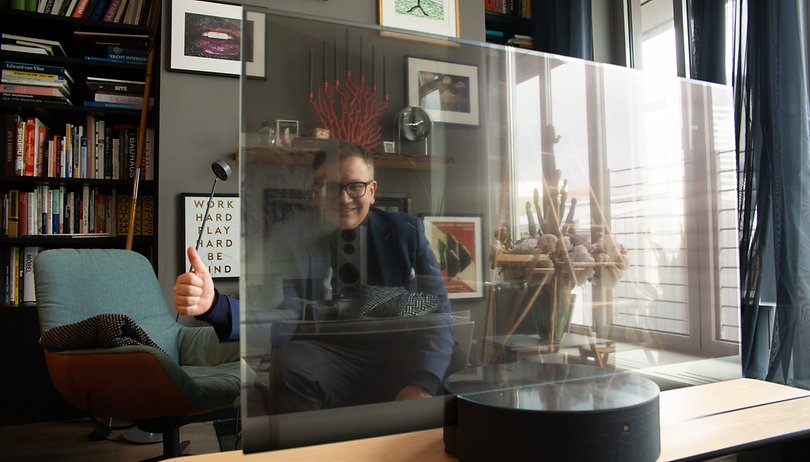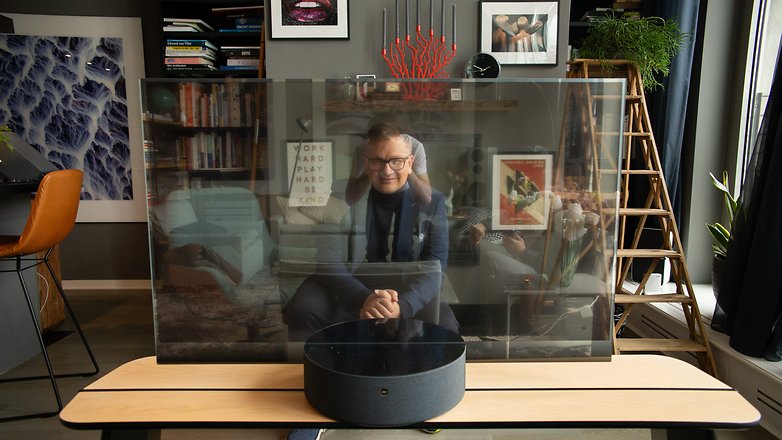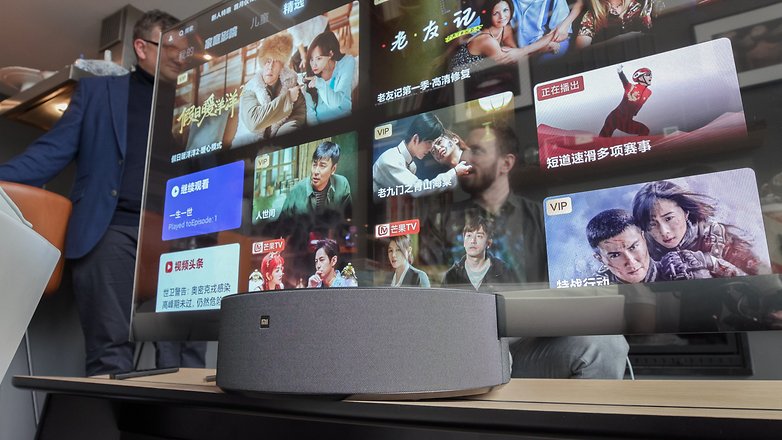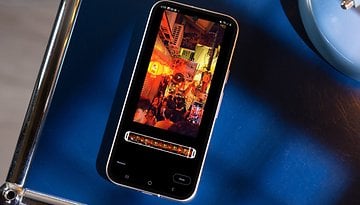Xiaomi Mi TV Lux hands-on: Are transparent TVs the future?


Read in other languages:
The Xiaomi Mi TV Lux is the first translucent TV you can buy - at least in China. So, at least for now, you'll have to go with our hands-on. Or you can book a flight to Xiaomi's home country soon and add some bulky luggage to your ticket on the return trip.
Good
- Transparent :o
- Transparent :o
- Transparent :o
Bad
- Only to be used in dark rooms
- Strongly reflective display
- Resolution only Full HD
Design
The design of the Mi TV Lux is really impressive. When turned off, the TV looks as if a wafer-thin glass panel had been inserted into a vacuum. The two panes, between which Xiaomi squeezes a 55-inch panel, are just 5.7 millimeters thick. The Mi TV Lux could easily be a modern work of art.

And somehow that is quite true: As chic as the TV might be, it is difficult to use it in everyday life. The round and quite large base makes the TV look strangely bulky on normal TV furniture and somehow out of place. Hanging it on the wall isn't an option, of course - and would be kind of a waste, even with the most beautiful wall in the world.
We've probably just spent the last 100 years tailoring our living room design to televisions. Yes, the sets got flatter and flatter - but they were and are always on the wall. The Xiaomi Mi TV Lux, however, simply functions differently as a TV. And that brings us back to the "modern work of art" of just now: In a hotel lobby, in a shopping mall, or in a museum, the TV is certainly a crowd puller. But in the living room?
Xiaomi Mi TV Lux display
This brings us to the second sticking point in the living room: the suitability of the Xiaomi Mi TV Lux for everyday use. The OLED panel is fast with a 120 Hz refresh rate, but the Full HD resolution looks like it came from 2015. If you look closely, you can also see the difficulty of building a transparent TV. The OLEDs are inserted as millions of small dots between the two glass panes of the display, each with small gaps in between.

If the TV is now turned off, all OLEDs are invisible - the same applies to dark content. So, when watching a horror movie, you'll regularly see what's happening behind the TV, for example the wall or the rest of your 120-square-meter living room. With bright content, on the other hand, you hardly notice that the TV is transparent. Only when you get very close to the screen can you see the individual pixels and look through the panel.
The fact that the Xiaomi Mi TV Lux is relatively reflective makes everyday use more difficult. In combination with the moderate display brightness, the TV is most fun in dimmed rooms. Thanks to OLED technology, the panel is at least extremely viewing-angle stable - so you can really admire the transparent TV from all angles. In short: The TV is as impressive as it is impractical, at least as far as your own living room is concerned.

I still want to have one. And who knows, Xiaomi might nail an electrochromic coating onto the rear glass panel in the next generation so that the "transparency" of the TV can be turned off completely if desired.
Xiaomi Mi TV Lux performance
What is actually inside the round base of the Mi TV Lux? First of all, Xiaomi installs two 8-watt speakers with Dolby Atmos support that make quite a bit of noise. The TV's brain is also located here, consisting of a MediaTek 9650 (4x Cortex-A73) with a Mali-G52-MC1 GPU. This is sufficient to display the TV's interface smoothly in our practical impression. Xiaomi uses "MIUI for TV" based on Android TV for the interface.

The ports on the back of the base unit include the usual three HDMI ports, two USB-A ports, AV input, optical output, Ethernet port and antenna connection. The Mi TV Lux also has a modest 32 GB of internal storage.
Early Verdict
The bottom line is that the Xiaomi Mi TV Lux is an impressive technology demonstration - a vision. When I look at the translucent OLED TV, I see the window panes of my apartment interspersed with display folio just like my bathroom mirror or the windshield of my self-driving cinema car.
However, I also see that there is still a long way to go. Apart from the - admittedly huge - wow factor, however, the Mi TV Lux does not have much to offer. If you want to watch TV or play games, you need a dark room; and you cannot really put the TV in the middle of the room due to its transparency.

In the end, the Mi TV Lux is interesting for early adopters with a lot of money - and for hip doctor's offices, modern museums, or luxury hotels that want to put a technical work of art in the lobby. Or can you think of a better use case?














I suspect the brightness isn't up to the task yet for general use. Too easily washed out by what's behind it. I can see this for specialty uses like a bathroom mirror/shower divider assuming it can take the steam and moisture. But those aren't uses for the mainstream consumer either.
I think that for the mainstream consumer you will mostly find those in cars, AR glasses and perhaps windows that show up information? For now I know of LCD polarized films that you can put on windows to make them foggy or transparent with the push of a button. Prices are not too expensive, I think somewhere around $20/ Sq meter. They mostly use them for toilet stalls, meeting rooms and offices and sometimes in houses.